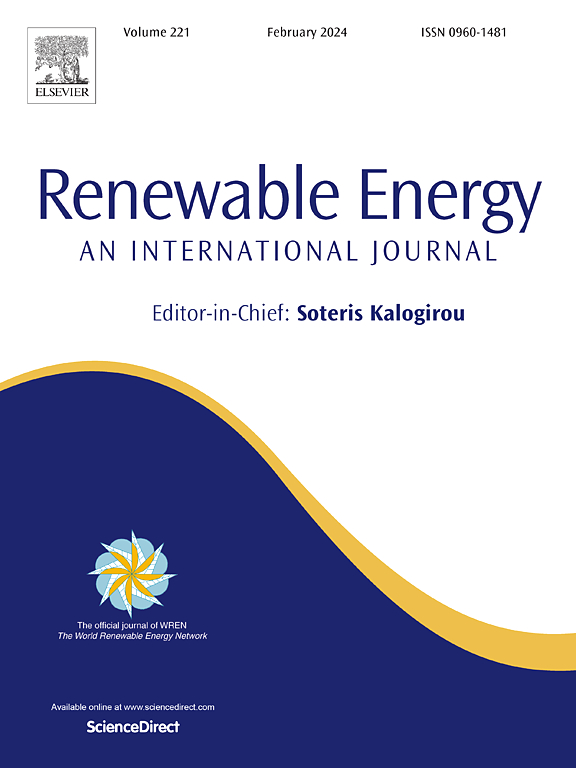Techno-economic analysis of floating ocean current power plant of Haya Strait Indonesia
IF 9
1区 工程技术
Q1 ENERGY & FUELS
引用次数: 0
Abstract
The real action to mitigate the impact of climate change is to carry out an energy transition from fossil energy to new and renewable energy (NRE). One source of NRE for Indonesia's future is ocean current energy, which requires careful study of energy, technological, economic, environmental, and social potential aspects.
This paper describes the techno-economic analysis of a floating ocean current power plant (FOCPP) by applying a ducted turbine array system of various sizes according to local bathymetric conditions. Techno-socio-economic analysis of power plants includes ducted turbine energy performance, annual energy production (AEP) value, capital expenditure (CAPEX) and operational expenditure (OPEX), net present value (NPV), and Levelized Cost of Energy (LCOE) as well as payback period (PBP). The analysis was carried out based on the results of testing the ducted turbine prototype in the Haya Strait, Maluku Islands. The analysis results show that the Haya Strait FOCPP has an energy and economic development perspective by applying ducted tidal turbines with a diameter of 1–5.5 m in a six block array. AEP ∼141,145.6 MWh with a Ravg value of ∼204,946,301 (million Rupiah). Gross initial investment costs ≥300 billion Rupiah and PBP ≥6.3 years. FOCPP for small islands is suitable for entering the industrialization and downstream stages.
印尼哈亚海峡漂浮海流电厂技术经济分析
减缓气候变化影响的真正行动是从化石能源向新能源和可再生能源(NRE)过渡。印尼未来可再生能源的一个来源是海流能源,这需要对能源、技术、经济、环境和社会潜力方面进行仔细研究。根据当地水深条件,采用不同尺寸的导管式涡轮阵列系统,对浮式海流电站进行了技术经济分析。电厂的技术-社会经济分析包括管道涡轮机的能源性能、年能源产量(AEP)值、资本支出(CAPEX)和运营支出(OPEX)、净现值(NPV)、平净能源成本(LCOE)以及投资回收期(PBP)。分析是基于在马鲁古群岛哈亚海峡对导管式涡轮原型机的测试结果进行的。分析结果表明,采用直径1 ~ 5.5 m的风管式6块阵式潮汐能发电具有能源经济发展的前景。AEP ~ 141,145.6 MWh, Ravg值为~ 204,946,301(百万卢比)。总初始投资≥3000亿印尼盾,PBP≥6.3年。小岛屿的FOCPP适合进入工业化和下游阶段。
本文章由计算机程序翻译,如有差异,请以英文原文为准。
求助全文
约1分钟内获得全文
求助全文
来源期刊

Renewable Energy
工程技术-能源与燃料
CiteScore
18.40
自引率
9.20%
发文量
1955
审稿时长
6.6 months
期刊介绍:
Renewable Energy journal is dedicated to advancing knowledge and disseminating insights on various topics and technologies within renewable energy systems and components. Our mission is to support researchers, engineers, economists, manufacturers, NGOs, associations, and societies in staying updated on new developments in their respective fields and applying alternative energy solutions to current practices.
As an international, multidisciplinary journal in renewable energy engineering and research, we strive to be a premier peer-reviewed platform and a trusted source of original research and reviews in the field of renewable energy. Join us in our endeavor to drive innovation and progress in sustainable energy solutions.
 求助内容:
求助内容: 应助结果提醒方式:
应助结果提醒方式:


